Nike Foamposite: Everything You Need to Know About the Air Foamposite One, Its Tech and More
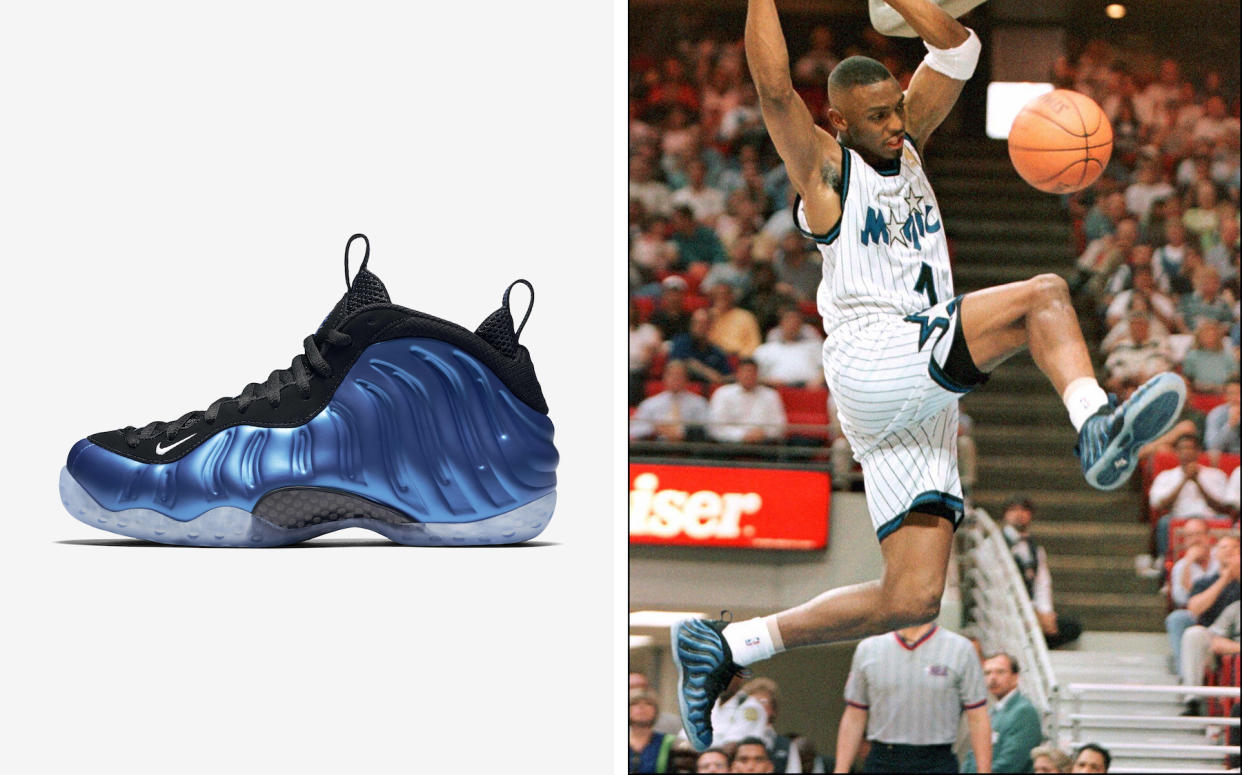
- Oops!Something went wrong.Please try again later.
- Oops!Something went wrong.Please try again later.
More from Footwear News
Nike Reveals WNBA Star Sabrina Ionescu's New Signature Shoe, the Sabrina 2
Nike Could Be Losing Its Lead in Online Running Shoe Traffic, Similarweb Data Shows
Supreme Is Releasing a Special Edition of the Nike Air Force 1 Low Exclusively in Shanghai
Although it’s been used sparingly since first coming to market more than 25 years ago, Foamposite remains one of Nike’s most emblematic technologies.
Often used to refer to the Air Foamposite One sneaker in short-hand, Foamposite is the name of an advanced upper technology launched by Nike in 1997. By pouring liquid polyurethane into a mold as part of a process involving heat and pressure, Nike is able to create a single, sculpted piece to form a sneaker’s upper. The result is a snug and secure fit that almost molds to the foot and a sheeny, almost-iridescent finish that appears alien or as if it should be used for a superhero’s costume.
Foamposite has primarily been put into use for basketball sneakers, beginning with the Air Foamposite One, which was also a signature sneaker for Penny Hardaway without appearing in the Air Penny line. Nike’s experimented with other applications such as mules and tennis shoes, but the results were mocked if not downright disastrous. Even the Foamposite One was a market failure upon its initial release, only becoming a true hit with a Retro release paving the way for new editions a decade later.
Below, Footwear News takes you through everything you need to know about Nike’s Foamposite shoes, including what the tech is, why it’s so expensive to this day and some of the most important models.
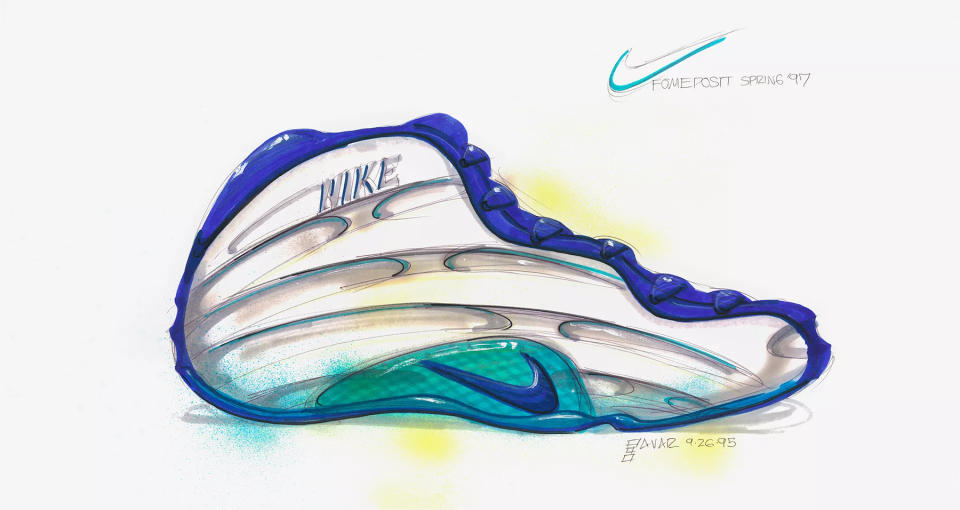
Foamposite Technology
Eric Avar led the development of Foamposite as an experiment out of Nike’s Advanced Product Engineering Group. “There was this notion of what if you just dipped your foot in this liquid bath of material and it just sucked around your foot?” Avar said in a Nike feature on the Air Foamposite One. “And what if you could go play basketball in that?”
In essence, the upper was created by pouring liquid polyurethane into an “envelope” created by a last in the center and an outer wall featuring the texture you see on the surface. By using pressure and heat, the APE team was able to turn the liquid into a solid with just one single piece to form the upper.
Convincing Nike to put the technology into use wasn’t easy for Avar and his team, and Nike had to outsource production of the Foamposite mold to Daewoo, a Korean car manufacturer, for a fee of $750,000.
Nike also had to figure out a new way to affix the upper to the sole. The solution ended up being five times stronger than previously used methods and informed how Nike would construct other sneakers.
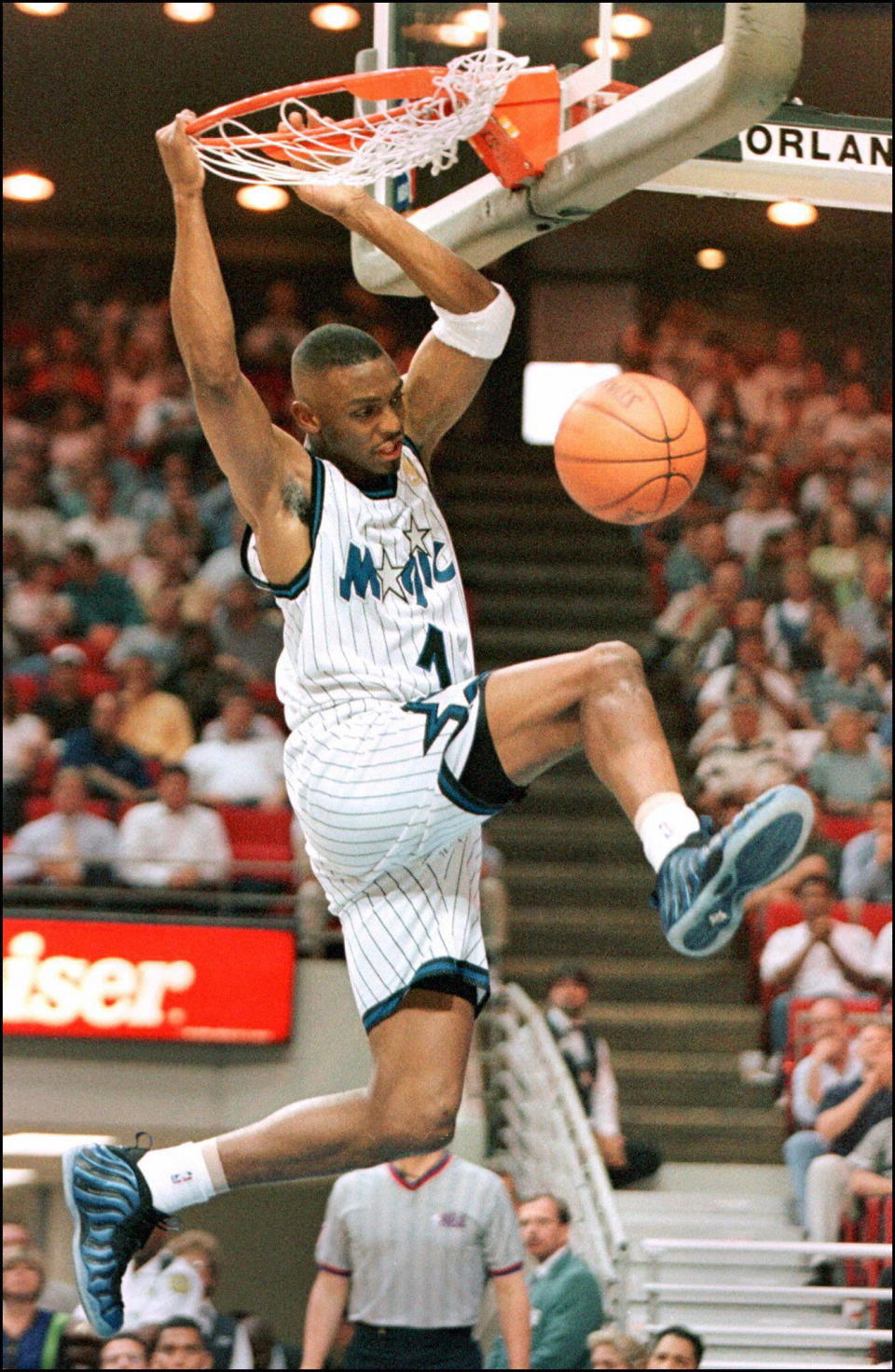
Penny Hardaway’s Air Foamposite One
Nike launched its Foamposite technology in 1997 through two basketball sneakers, the Air Foamposite One and Air Foamposite Pro. The former shoe, which lacks the gel Swoosh on its profile that defines the latter, was originally designed with Scottie Pippen in mind. Instead Penny Hardaway became instantly enamored with the shoe when it was informally shown to him during a meeting with Nike.
It had to be his, and Nike obliged by putting Hardaway’s “1 Cent” logo on the heel and tongue and launching the sneaker in a “Royal Blue” colorway that didn’t quite match his Orlando Magic uniform (an incongruence that would draw the league’s ire and force Penny to take a sharpie to his own shoes). By this point, Hardaway had already been given two signature sneakers, the Air Max Penny 1 and and Air Penny 2. His third model, more formally speaking, released just months after the Air Penny 3 while also utilizing Foamposite technology for its upper.
Hardaway’s signature line would grow to include four Penny models, but today it’s the Air Foamposite One that’s most strongly associated with him. The player linked most closely with the shoe didn’t even debut it, though. That honor went to Mike Bibby, who donned the shoe as a college player for the University of Arizona in the 1997 NCAA Championship Game.
Perhaps surprisingly in hindsight, the Foamposite One didn’t sell very well in its initial run. The cost of producing Foamposite tech (plus a not-insignifacant marketing spend) brought the retail price for the shoe to a whopping $180, $30 more than the Air Jordan 13 that also debuted in 1997. Nike continued to create more models featuring Foamposite, but the seminal shoe wouldn’t return to stores until its 10th anniversary. In fact, “Royal” was the only original colorway for the Air Foamposite, meaning there’s technically only one edition that can be a Retro.
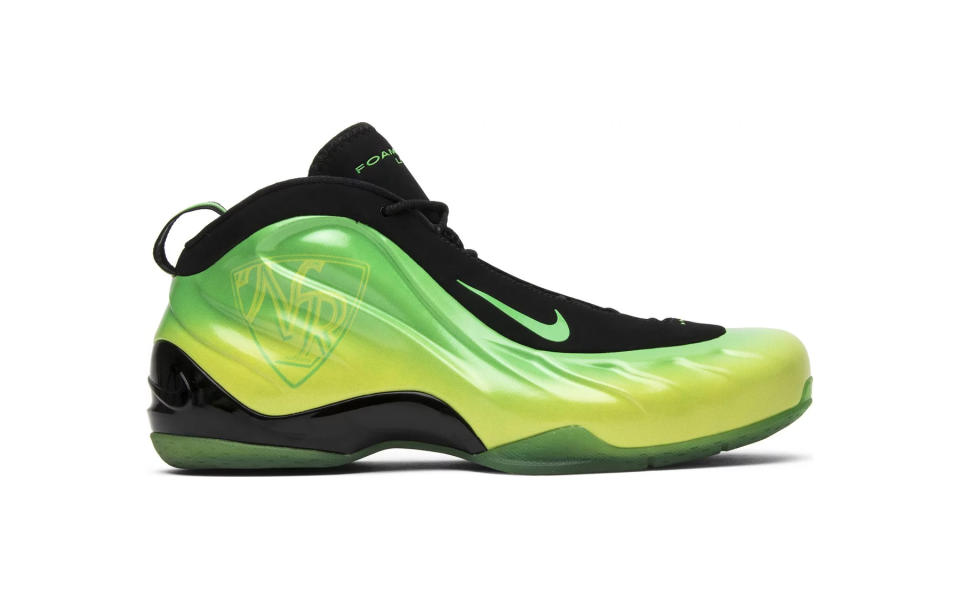
Other Nike Sneakers Featuring Foamposite
Following the Air Foamposite One and Air Foamposite Pro, Nike would release the Total Foamposite Max in 1998 and the Air Flightposite in 1999, both of which were intended for basketball. The Jordan Jumpman Team Masterpiece also made partial use of the technology of its upper in 2000, and the once-maligned and soon-to-be-revived Clogposite debuted that same year. Additional basketball sneakers include the Air Pureposite (1999), Air Flightposite II (2000), Air Flightposite 3 (2001), Air Signature Player (2001) and Air Ultraposite (2003).
The Zoom LeBron 4 also made use of the technology in 2006, while still holding the record for LeBron James’ heaviest signature shoe, and Carmelo Anthony’s Jordan Melo M4 featured the tech around its collar and heel in 2007. Foamposite would appear in James’ line two more times on the Zoom LeBron 5 (2007) and LeBron 11 (2013).
Arguably the most famous of all Foamposite sneakers in the new millennium is the Foamposite Lite, which was made in a “Kryptonite” green colorway for Nate Robinson as he defeated “Superman” Dwight Howard in the famous 2009 NBA Dunk Contest. Nike released just 100 pairs of the sneaker the next month on St. Patrick’s Day, making it perhaps the most collectable Foamposite shoe of all.
Foamposite has a more infamous presence in tennis, where it was used for the Courtposite as Andre Agassi’s signature model in 2002. Breathability issues prevented the shoe from becoming popular in the sport, and even Agassi chose not to wear them in competition. Despite such disrepute for its lore, the Courtposite was still brought back by Supreme for a collaboration last fall.
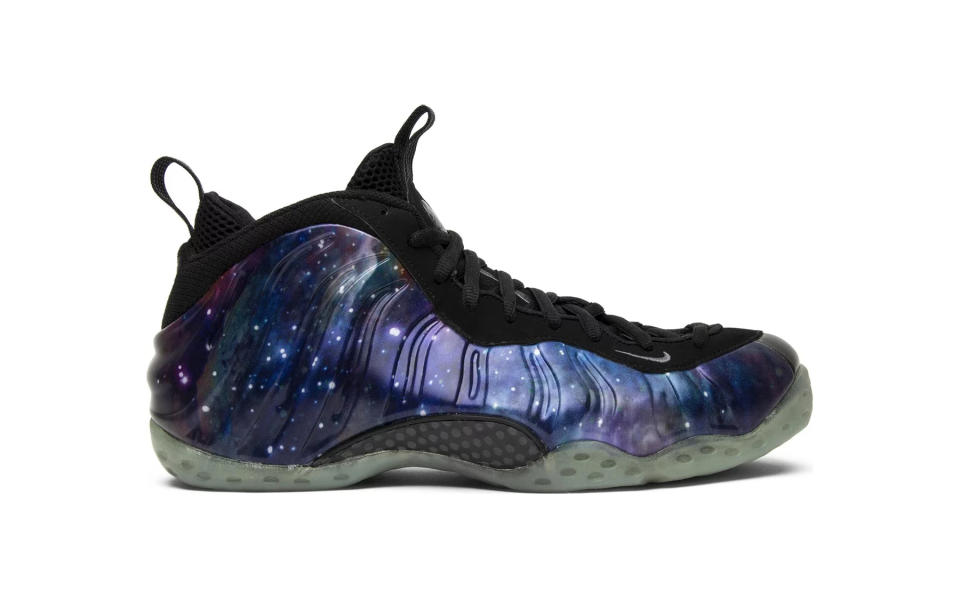
Air Foamposite One Retro and New Colorways
Even though the Air Foamposite One underperformed in sales in its original one, sneakerheads still clamored for the shoe’s return and were finally appeased for the first Air Foamposite One Retro in 2009. Nike didn’t even save the original molds for the shoe, and so it again had to shell out a hefty sum to produce new ones, which should explain why the sneaker is still so expensive today with a retail price of $240.
The original Air Foamposite One “Royal Blue” colorway ushered in the return at the beginning of 2007, and a new all-black version came later in the summer. “Eggplant,” now one of the most beloved colorways of the model, made its debut in 2009, and the 2010s would see the release of several new variants that are among the most hyped sneakers of the modern era.
The 2012 release Air Foamposite One “Galaxy” was a “Break the Internet” type of moment for sneakerheads, and someone even posted a Craigslist ad in Queens offering to trade a 1996 Chevy Cavalier for a pair. Even more hyped that year was the black pair with green flames matching a glowing midsole made in collaboration with the film “ParaNorman,” which was produced by Nike co-founder Phil Knight’s animation studio.
Supreme would also release two variants in 2014 for its 20th anniversary featuring baroque-style graphics. The crowd outside Supreme’s Manhattan store was so disorderly that the streetwear brand was ordered by the NYPD to cancel the in-store release and sell the sneaker exclusively online — marking a flashpoint not just for Supreme’s popularity, but also broader sneaker culture.
About the Author:
Ian Servantes is a Senior Trending News Editor for Footwear News specializing in sneaker coverage. He’s previously reported on streetwear and sneakers at Input and Highsnobiety after beginning his career on the pop culture beat. He subscribes to the idea that “ball is life” and doesn’t fuss over his kicks getting dirty.
Best of Footwear News
Air Jordan 11 History & Timeline: Everything You Need to Know About the Air Jordan 11
The History of Oxford Shoes: From University Grounds to Red Carpets
Sign up for FN's Newsletter. For the latest news, follow us on Facebook, Twitter, and Instagram.

